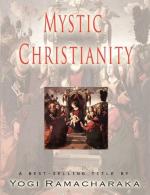To understand the importance of the event which drew the steps of the Magi to Bethlehem, we must realize that the Coming of the Master was a favorite subject of speculation and discussion among Occultists and Mystic organizations all over the Oriental countries. It had been foretold, in all tongues, that a Great Master would be given to the world—a mighty avatar or appearance of Deity in human form, who would incarnate in order to redeem the world from the materiality which threatened it. The Sacred Writings of India, Persia, Chaldea, Egypt, Media, Assyria, and other lands had foretold this event for many centuries, and all the mystics and occultists longed for the day “when the Master would appear.” The Jews also had many traditions regarding the coming of a Messiah, who would be born of the seed of David, at Bethlehem, but their Messiah was looked upon as likely to be an earthly king, destined to free Israel from the Roman yoke. And so, the tradition of the Jews was regarded as of inferior moment to their own predictions, by the Mystic and Occult Brotherhoods of the East. To them it was to be an avatar of Deity—God in human form come to take his rightful seat as the Grand Master of the Universal Grand Lodge of Mystic—a descent of pure Spirit into matter. This conception certainly was very much higher than that of the Jews.
And so, knowing these things, we may readily understand why the Magi pursued their search with such ardor and enthusiasm. They had many weary miles of travel to Bethlehem, over a year being consumed in the journey. They reached Bethlehem over a year after the birth of Christ and the appearance of the Star, the sight of which had started them on their quest. They sought not a new-born babe, as common belief has it—they searched for a child born over a year before. (We refer the student to any reference work, for a verification of this last statement. The illustrations in the Sunday school books showing the Wise Men worshipping a new born babe in the manger are on a par with the others mentioned. The Wise Men had nothing to do with the stable or the manger—for Joseph, Mary and the Babe were lodged in a house by that time, as we shall see as we proceed.)
At last after their long and weary wandering over hill and plain, mountain and desert, the Magi found themselves in Jerusalem, inquiring diligently as to the whereabouts of the Master of Masters—the Promised One, whose coming had been the subject of prophecy for centuries among the Eastern peoples. The Jews of whom they inquired, although not familiar with the predictions regarding a Mystic Master, or avatar of Deity, were nevertheless thoroughly familiar with the prophecies of the coming of the Hebrew Messiah, and naturally thought that it was of this expected earthly King of the Jews that the Magi inquired, and so they reported it far and wide that these Great Men from the East had come to Jerusalem to find the Messiah—the King of the Jews,




